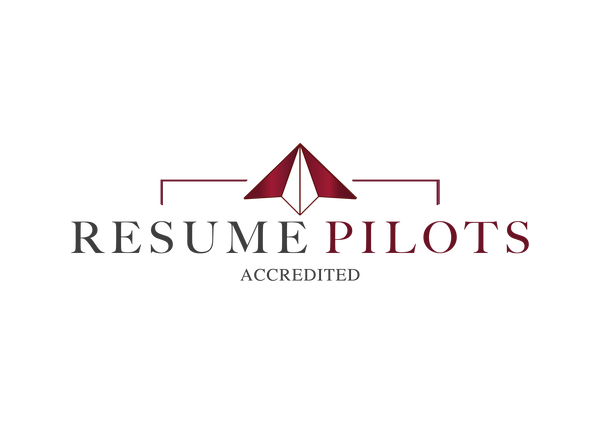
The Reality Check: Why Strong Candidates Are Struggling in Today’s Job Market
The Reality Check: Why Strong Candidates Are Struggling in Today’s Job Market (and What You Must Change to Compete)
It’s not your credentials, it’s the market. Understanding that is the first step to taking back control.
This is Day One in a week-long series unpacking today’s job market reality and why the executives who are still winning are those who’ve reframed their résumés for the decisions hiring managers are making now.
Tomorrow, we’ll break down how to beat the gatekeepers; ATS, AI, and recruiter scans that are quietly filtering out exceptional senior talent before it’s ever seen.
The Truth No One Wants to Admit
If you’re an experienced professional and your job search has gone silent; no callbacks, no interviews, no traction, it’s natural to ask: “What am I doing wrong?”
The simple fact is, you’re unlikely to be doing anything “wrong”
What’s changed is not your capability; it’s the market
In the US, LinkedIn’s Hiring Index shows hiring activity remains nearly 20% below pre-pandemic levels, while applicant volume has surged. Senior roles that once drew 40 applicants now attract 400. Remote postings can receive over 1,000.
The result? An oversaturated market where strong candidates are stuck, not because they lack value, but because they are still presenting that value using yesterday’s methods.
“The mistake I see most often isn’t underqualification, it’s misalignment. Great candidates are packaging themselves for a market that no longer exists.”
— Zoe Price, CEO, Resume Pilots and CV Pilots
It’s The Market That’s Shifted, Not You
Three forces have fundamentally rewritten the rules of hiring:
- Job postings are down — especially at leadership level
- Applicant volume is up — driven by layoffs and career pivots
- AI and ATS act as gatekeepers — résumés are scanned, ranked, filtered before humans ever see them
But here's the deeper shift:
What hiring teams look for in senior appointments has changed
They are no longer buying experience. They are buying clarity, risk reduction, and outcomes
❗Challenging Question
If a recruiter only saw the top third of your résumé, would they see leadership, value, and strategic impact? Or just chronology and job titles?
Because today, you are rarely read. You are scanned… then judged.
🔹 Need to Reposition Your Résumé for Today’s Market?
Our Executive Résumé Writing Service builds résumés engineered for modern hiring; ATS-optimized, impact-led, and aligned with what decision-makers look for today.
→ Work with a Résumé Pilots Executive Writer
What’s Changed: Yesterday vs Today in Senior Hiring
|
Yesterday |
Today |
|
Tenure & pedigree |
Portable value with testable outcomes |
|
Big-bang transformation |
Sequenced wins (30/60/90 clarity) |
|
Hero leader |
Coalition builder |
|
Industry loyalty |
Context literacy across sectors |
|
Communication skills |
Signal clarity under pressure |
Today’s hiring conversations are no longer about “Have you done it?”
They are about “Will you deliver it here, in this context, under these pressures?”
You’re Competing With Noise — Not Talent
The competition isn't only other executives. It’s:
- AI-written résumés flooding job boards
- Generic templated submissions
- Candidates who tailor every application with surgical precision
This is why highly qualified leaders are being passed over. Not from lack of experience, but lack of translation.
Why ‘Strong Experience’ Isn’t Enough Anymore
Recruiters and hiring managers are filtering for one thing above all: risk
They’re asking:
- Do I understand this candidate’s value in seven seconds?
- Can I confidently defend this hire on a hiring panel or board call?
- Will this person add clarity, or complexity, to my team?
- Yes they have past results. But can they replicate those for me?
Most resumes fail here
They list responsibilities, not results. Activity, not value. Tenure, not traction. History, not replicability
🔹Want to Build It Yourself? Use an Executive Template That Already Works
Our ATS-ready Executive Templates include layouts, bullet frameworks, and leadership positioning guides used by candidates now landing interviews at Fortune 500 firms.
→ Explore Template Bundles
What Hiring Teams Now Optimize For (The Six Traits)
Hiring organizations today are quietly optimizing leadership hires against six filters:
1️⃣ Value Thesis (Clarity)
One sentence: “In 12 months I will achieve X by doing Y, measured by Z”
Signals: Future-oriented headline, clear impact intent
2️⃣ Evidence (Proof, Not Claims)
Before → After metrics, context, constraints
Signals: Revenue growth, cost reductions, NPS, cycle time, risk mitigations (and the ability to replicate those outstanding results in another setting)
3️⃣ Context Mastery (De-Risking)
Shows understanding of business and operating models, regulation, internal politics
Signals: Tailored resume, market insight, informed positioning
4️⃣ Operating Cadence (How You Work)
Not slogans, but systems
Signals: Governance cadence, OKRs, dashboards, team rituals, scale through systems
5️⃣ Influence & Change (Low-Friction Delivery)
Moving people without chaos
Signals: Stakeholder wins, union/work council navigation, conflict resolution, servant leadership
6️⃣ Risk Profile (No Surprises)
Predictable, ethical, defendable leadership
Signals: Audit success, compliance wins, succession built
❗Second Challenging Question
If you were asked in an interview, “How do you make decisions under pressure?”, could you clearly walk through the trade-offs you considered, or would you simply describe the task?
Because at senior level, trust is built not by what you did, but by how you think.
What Makes a Senior Candidate Appealing in the Room
Here’s what shifts a candidate from “interesting” to “We trust them”:
- A succinct leadership thesis and 90-day outline
- Three signature stories (Growth, Efficiency, Turnaround) backed by metrics
- Evidence artifacts: dashboards, board decks, comms plans
- Talent point of view: who you'd move, why, and how you'd build capability
- Composure: the ability to explain tough decisions through the trade-offs you weighed, not through long monologues or ego
Red Flags — Why Strong Resumes Still Get Rejected
❌ Generic “transformational leader” language
❌ No metrics, no framing of constraints or stakes
❌ Industry jargon without commercial relevance
❌ Laundry list of initiatives but no compounded outcome
❌ Buzzwords without proof of operating model fluency
🔹Ready for Interviews? Don’t Let the Final Mile Be Your Weakest Link
Our Interview Coaching turns executive experience into compelling boardroom narratives; 90-second impact stories, leadership theses, stakeholder fluency. And the framing of results in a compelling, irresistible value proposition
→ Book Interview Coaching
How to Show This On Paper & In Conversation
✔ Headline:
“VP Operations | Cut cost-to-serve 14% while +6 pt NPS (2 regions, union environment)”
✔ Top Summary (2–3 lines):
Future fit | Context fit | Commercial value
✔ Bullet Formula:
Action + Metric + Constraint/Lever
✔ Add a ‘How I Operate’ Box:
Cadence • Decision Rights • Stakeholder Model
✔ Interview Opening (45-second thesis):
“I specialize in…” → Key need → Proof anchor
Self-Audit: Score Yourself (1–5)
|
Question |
Score |
|
Do I have a one-sentence value thesis tied to business outcomes? |
☐ |
|
Do I present three signature impact stories with metrics? |
☐ |
|
Have I tailored my resume to this company’s context? |
☐ |
|
Do I show how I operate, not just what I did? |
☐ |
|
Can I explain a decision I wouldn’t make and why? |
☐ |
“The candidates winning interviews today aren’t the loudest. They’re the clearest. They make it effortless to see why they matter.”
— Zoe Price, CEO, Resume Pilots and CV Pilots
The most effective way to beat the gatekeepers is to avoid them altogether, by being positioned before you ever apply.
Your reputation and visibility within your industry are the strongest levers you have. But reputation alone isn’t enough if your résumé and LinkedIn profile don’t reinforce it. Even the most respected leaders risk being overlooked when their documents fail to communicate the clarity, value, and strategic impact others know them for.
That’s where professionally developed résumés come in, not to embellish, but to translate your leadership into the language hiring systems and decision-makers trust. A strong network may open doors, but a strategically written résumé ensures you walk through them with credibility.
Yes, reputation, advocacy and relationships take time to build. But at executive level, they work best when paired with sharp positioning, a résumé that matches the level of leader people expect you to be.
📅 Want to Reposition for Today’s Market? Let’s Talk
Book a consultation and we’ll identify where your narrative is stalling, and how to correct it fast.
→ Schedule a Strategy Call
To find out more about the work we do at Resume Pilots, for C-Suite or aspiring C-Suite professionals, then visit www.resumepilots.com
If you would like to book a short call where you can ask questions and learn about our process, you can find a time to suit you with this link: https://www.resumepilots.com/pages/untitled
To get in touch with us, you can email us at team@resumepilots.com or visit our LinkedIn company page https://www.linkedin.com/company/resumepilots/

